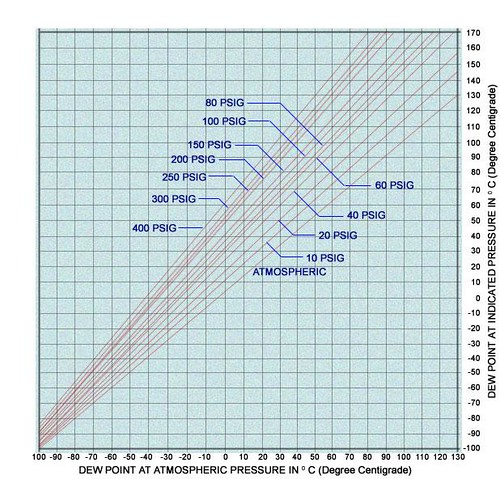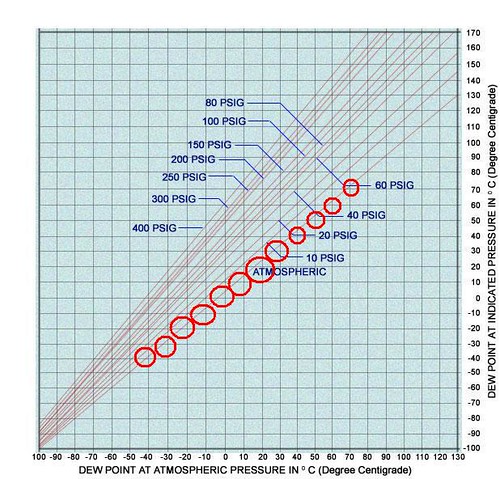Monday, October 22, 2007
There are many websites providing FREE information to their users/visitors in recent years. This has made a lot of information available for access and refer with no cost. These websites compile informations and arrange it in the way you can easily access and read. I am sure many of you are more often get information from internet rather than books, journal, etc. Have you ever ask yourself if the provide information is good, correct, reliable, correct and relevant ?
Let take for example, there is a simple Compressed Air Dew Point Chart available HERE for public view. This chart has given a very good tools to the user to convert compressed air dew point @ pressurized condition to dew point @ atmospheric pressure and vice versa. It really a simple but good tools for those process design engineer and plant engineer conversion of compressed air dew point.
Let take for example, there is a simple Compressed Air Dew Point Chart available HERE for public view. This chart has given a very good tools to the user to convert compressed air dew point @ pressurized condition to dew point @ atmospheric pressure and vice versa. It really a simple but good tools for those process design engineer and plant engineer conversion of compressed air dew point.
However, if you really goes in to details of the ATMOSPHERIC line, take the "0" on X-axis, it mean "0 degC dew point at ATMOSPHERIC pressure". If i draw a line straight-up and touch the ATMOSPHERIC line (diagonal red line) and horizontally reach the Y-axis, you will get "2 degC dew point at ATMOSPHERIC pressure". This does not tally between each and other. These happened to others temperature range from -40 degC to 70 degC. See below image.
This signified that the graph is incorrect for certain temperature range and this also imply that other lines may create some level of error. If you use the curve without careful, you may risk yourself in making mistake.
This signified that the graph is incorrect for certain temperature range and this also imply that other lines may create some level of error. If you use the curve without careful, you may risk yourself in making mistake.
(This is just an example for continuous education. It does not intended to offense any personal, party and company).
Those anytime you received any new information, first you have to assess how good, correct and reliable of the received information. One of major clue that presently here is use the known facts to verify the information. You may also to cross check with other reliable information e.g Perry Engineering Handbook to verify the information. This way will minimize your risk of making mistake.
If you found some doubt on any information on any website, you are encourage to advise the web owner. With this action, you will avoid more user refer to wrong information if it is really a mistake OR you will learn new knowledge as the web owner will advise you the reasoning behind your doubt.
If you have problem with contacting the web owner, you are always welcome to drop an Email to me.
If you found some doubt on any information on any website, you are encourage to advise the web owner. With this action, you will avoid more user refer to wrong information if it is really a mistake OR you will learn new knowledge as the web owner will advise you the reasoning behind your doubt.
If you have problem with contacting the web owner, you are always welcome to drop an Email to me.
Labels: Education, General, Learning


0 Comments:
Post a Comment
Let us know your opinion !!! You can use some HTML tags, such as <b>, <i>, <a>
Subscribe to Post Comments [Atom]
Home:
<< Home